Last month, my husband and I had an opportunity that seemed hard to pass up. Our friends were renting a home in the Caribbean and had invited us to come and join them. That meant we would have a complimentary place to stay, and our plane tickets could be purchased with points we had already accumulated. When my husband showed me pictures of the home and the beautiful, turquoise waters and white sandy beaches, I was in awe. How could I say no?
But… I did. I told him I couldn’t go. We had a seven-month-old baby who was exclusively breastfed, who co-slept and nursed throughout the night, who had only been away from me for five hours total in her little lifetime, and who had only taken a few bottles. Our older kiddos were at least 18 months old before we left them for a night or two.
Shortly after making that initial decision, I started to re-think my quick response and consider my husband. He had been working so hard on his clinic and providing for our family, and we hadn’t been on a long trip together in over seven years. We have three kids and quiet time together is hard to come by. I couldn’t help but reflect on how important it is to foster our relationship as a couple, as our kids won’t always be around.
So, I talked with my mom and dad, ensuring they were available and willing to care for our kiddos while we were gone, and then began consulting with our awesome, local lactation consultants to make an action plan for maintaining a successful breastfeeding relationship with our baby. It was surprising to me how little information was available about traveling while pumping, especially with flying internationally.

I’m thrilled to say that I was able to travel with my husband for nine days, pump 370 ounces of breastmilk (at our gates in the airport, on an airplane, a boat, a beach chair, and in a taxi), and transport all of that milk back to donate to a mama in need. And best of all, our daughter latched right back on when we got home, we’ve been able to maintain a beautiful nursing relationship, and my husband and I are so grateful to have spent such a wonderful time together and know that we still truly enjoy each other’s company for now and decades to come!
Here’s what I did:
- Spoke with local lactation consultants. Their advice: pump to get at least 40 ounces/day (or the equivalent of what your little one would take by a bottle each day)
- Took along breastmilk tea, made by a local stay-at-home mom, and sipped on that throughout the day
- Pumped every three to four hours throughout the day and once overnight (since our baby was still nursing in the night)
- Started taking a lactation support supplement 48 hours before coming home and the first three days back, as recommended by our local naturopath (I took two capsules three times per day of Vitanica’s LactationBlend)
- Carried-on my electric pump that I had been using regularly at home to use on the plane, and then took along with me on any day-excursions (the lactation consultants had recommended continuing using the pump that my body was used to for optimal emptying)
- Looked up TSA’s protocol for checking and carrying on breastmilk and printed off a copy to bring with me in case any of the agents had questions or were not aware of the guidelines. I was able to carry a small bottle cooler in my pump with an icepack (that needed to be frozen when going through security). When re-entering the country, I let the TSA agent know I had my pump and some breastmilk in the pump bag. The breastmilk was never opened or touched, just scanned from the outside with a special wand, and I was on my way. As for the 300+ ounces I had collected throughout the trip, I took a large Thirty-one cooler on wheels and filled that with the milk and multiple large, plastic ice blocks, and checked that bag. The agent told me that there was no way to avoid the scanner from their station to the plane, and assured me my milk would be fine (I didn’t take her word, but did speak with our lactation consultant again who assured me it was still fine for consumption).
- FYI: Select airports now have pumping pods/lactation suites available with seating and electrical outlets to nurse/pump in privacy. Check out http://mamava.com/.
- Wore comfortable clothes that were conducive to pumping on the plane: a maxi skirt, nursing tank top, and loose flowing shirt. On the way home I sat next to a sweet Sicilian couple. With my pump on my lap and the noise drowned out by the fans and engines of the plane, the couple had no idea I was pumping as we talked about their children and careers.
- I did call ahead to the place we were staying to ensure there was a fridge and freezer. If you are staying in a hotel, you may request a fridge be placed in your room. I do have one friend who travels often who was able to store her milk in a freezer at the hotel.
- See if you have an option to ship your milk home. We weren’t able to locate a dry-ice supplier on the island, and my husband assured me the cost would be astronomical, but I would have opted for this route if it was do-able.
- If you aren’t able to bring your pumped milk back with you, check out local La Leche, Human Milk 4 Human Babies, or MilkShare websites/Facebook pages to connect with a mom or organization who could benefit from your donation!
My Packing List:
- Electric pump
- Plug-in and battery pack (be sure to check if you need a plug-in adapter if you are traveling internationally)
- Extra batteries
- Three sets of flanges and connectors for pumping
- Extra tubing
- Plenty of breastmilk storage bags
- Quick clean wipes to clean pump parts on the plane
- Small container with dish soap and napkins for use in the airport and hotel
- Ziplocks (gallon size): I put six to seven bags of breastmilk in each to transport
- Ice packs: small size for use on the plane/travel, large plastic bricks to keep milk frozen or cold for longer travel
- Coolers: small water-bottle sized soft cooler for the plane and day trips (I brought Thirty-one’s “Bring-a-Bottle Thermal,” which had enough space to hold a small ice pack and a couple of bags of breastmilk) and a large, soft cooler on wheels to check frozen milk (I used the “Rolling-Thermal” by Thiry-one).
- Breastfeeding Tea
- LactationBlend supplements
- Print-off of TSA’s breastmilk guidelines



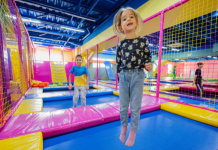
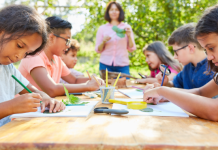
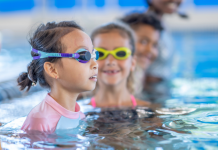
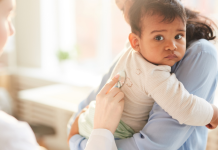


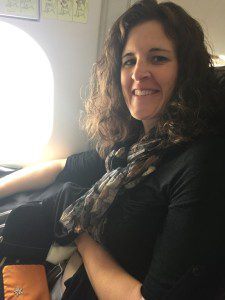
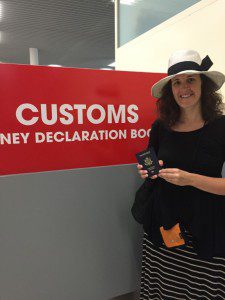



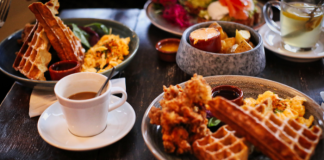




Thank you for the great tips! I am curious who made the breastmilk tea & what brand of pump you used that so quiet/discreet.
Thanks!
I got the milk boosting tea from Angela with Basking Babies who gets it from a local mama who makes it. And I took the same pump I use every morning, a Medela Pump-in-Style. It isn’t the most quiet, but I zipped up the compartment around the tubing as tight as I could and the airplane noise was enough to cover up any additional noise. The lactation consultants had recommended to take the same pump my body was used to. 🙂
I am curious… were you able to pump enough extra ahead of time to have a supply of stored milk built up for feeding the baby while you were gone? And also wondering why you chose to donate the milk instead of keep it??
Kelly,
My babe and I had a rough start (see my recent post on tongue/lip revisions), and so I had been pumping since she was a couple of days old. I have been blessed to bring my daughter to work with me up to this point, but pump each morning and had a great supply built up. In fact, I had so much that I had plenty left when I got back and knew a mama in desperate need of donated milk. I’ve been able to donate close to 1000 ounces up to this point, it’s been such a joy and blessing!